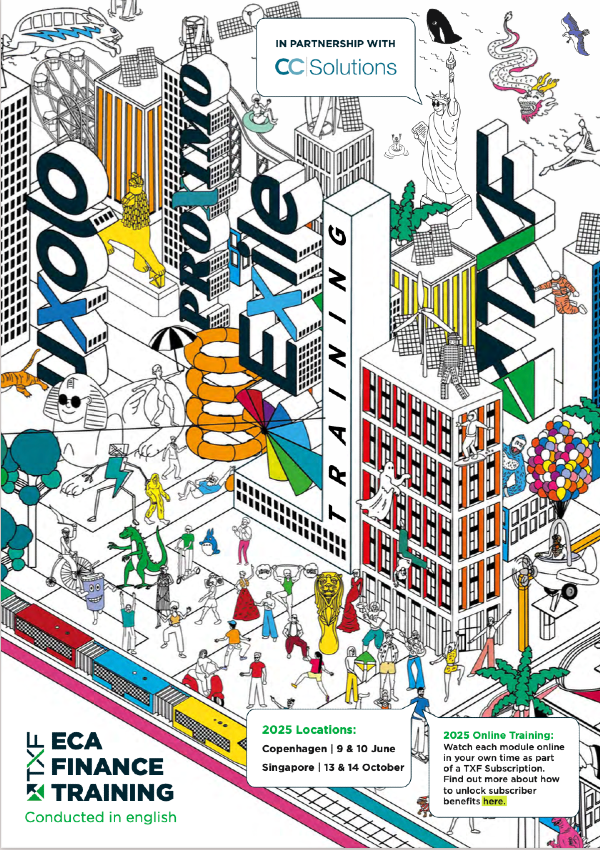Trade risk triggers
An executive summary of TXF's key global country risk ratings for January 2018.

Key global risks into January 2018. For latest TXF country risk ratings and methodology click here.
North America: US policy dominates North America’s risk profile in 2018. North Korea is developing the capacity to hit the US mainland and the reaction of the US to the threat will determine how this plays out during the year. It is not in the US strategic interest, or indeed the interests of Canada and Mexico, to go to war on the Korean Peninsula and there is sufficient appetite in the US administration for diplomacy to allow diplomacy to take its course and thus to avoid war. However, Kim Jong Un and Donald Trump are engaged in a personal game of chicken and because much of this is driven by inexperience on both sides, the risks of miscalculation are very high. Meanwhile, China continues to play a role that supports the diplomatic route to a solution as it is not in China’s interests to fight a war either on the Korean Peninsula or in the South China Sea. The fact that two ships ostensibly taking oil to North Korea were seized by South Korea has heightened tensions between the US and China. These are likely to play out in trade rather than military terms, but although there will be much noise about a Trade War, a full blown economic conflict is unlikely because the US is much weaker and more isolated than China, particularly if it weakens its ties with NATFA.
Asia: The potential for conflict on the Korean Peninsula will be the main risk for the region through 2018. It is not in China’s interests for there to be a full-blown war between North Korea and South Korea or the US and, as a result, it is following UN protocols and agreements. The threat from North Korea’s nuclear ambition has diverted attention away from the South China Sea, but China’s military build-up is still an issue. It is a reflection of Xi Jinping’s desire to create a powerful, global China, but the intention to use the military resources the country has accumulated should be seen as minimal. The only risk to this is if the US pre-emptively launches a strike on North Korea in response to some action from the country. China would not tolerate this as it would represent a threat to its borders. Australia and Japan are aligned with the US and many of the countries in the region are building up self-defence capability in the event of any conflict materialising.
China’s One Belt One Road initiative will gather pace during 2018 and this will begin to link China, Eurasia, Asia and Russia together more closely economically and politically. The main effect of this will be to increase US isolation rather than to create conflict, but it does suggest that the shift in patterns of trade from West to East that have been evident for some time will become more developed.
Europe: Europe’s main political risks in 2018 will be the threat posed to its peace from the build-up of troops on its borders with Russia and the Crimea. The EU was established to maintain peace in Europe after the Second World War and while this has been successful so far, the threats to its security from Russia are manifesting themselves in NATO troop movements to Scandinavia, Poland and the Baltics. There is a clear need for calm thinking and while Germany does not have a national government, that mantel is taken by President Macron of France. However, Germany is likely to form a government fairly quickly in 2018 and Chancellor Merkel’s experience on the global stage will mean that even if “business as usual” in the Grand Coalition at home disappoints the German public, the world will see Europe as stable in international relations terms. Brexit, against this backdrop and against conflicts that the EU has internally with Hungary and Poland, seems like something of a luxury problem. The EU has more economic and political power than the UK and the first stage of negotiations has shown that it is unlikely to move on its core requirements for any future relationship.
Russia and Eurasia: Russia’s relationship with China is a marriage of convenience in order to strengthen both states’ influence in the Eurasia region. It also serves Russia as a balance to China’s One Belt One Road policy. Eurasia is likely to be pulled more closely into a political and geopolitical corridor between the two countries and the major risk that this poses in 2018 is if Pakistan and Iran are also integrated into the Eurasia Economic Area. If they are, then it will potentially exclude US and European countries from doing business in the region not least because of the sanctions that exist against these countries. While there is no love lost between Russia and China, the nature of their relationship will drive the risks in the Eurasia region through the year.
MENA: The US decision to recognise Jerusalem as the capital of Israel and move its embassy to Jerusalem from Tel Aviv undermines United Nations agreements. The vote against the US decision was met with threats from the US itself towards those nations that voted against it and while on the face of it this simply highlights US isolationism, at a more profound level it raises the stakes in the Middle East. During December Israel, emboldened by US support, continued attacks on Iranian positions in Syria and on Palestine. The fact that Egypt, Iran, and Libya are increasingly aligned with Russia combined with the fact that Saudi Arabia continues its blockade and attacks in Yemen, makes the whole region vulnerable to conflict. It was suggested that demonstrations in Iran at the end of December against the regime were instigated by Israel. While this remains unproven, it highlights the tensions in the region that are likely to escalate as 2018 unfolds.
South America: The main risks in South America into 2018 remain corruption and drug trafficking. Even in more stable countries like Brazil and Argentina the approach to drug cartels is militaristic and corruption remains high. With Costa Rica, Brazil, Colombia, Paraguay, Mexico, and possibly Venezuela all scheduled to hold elections this year the region remains vulnerable with high potential for internal conflict and violence.
Sub Saharan Africa: Boko Haram’s continues to present a terror threat to a number of West African nations. Nigerian President Muhammadu Buhari’s declaration that the organisation had been defeated was premature and North East Nigeria continues to suffer attacks. Nevertheless, Boko Haram has led to strengthened relations between West African states who have unified against the common enemy. The real challenge for the region remains poverty and migration but these have been issues for many years. Political instability in countries like Kenya are short-lived and the demise of Robert Mugabe alongside the Cyril Ramaphosa’s election as the ANC leader offers the region new leadership and a break with the past.





